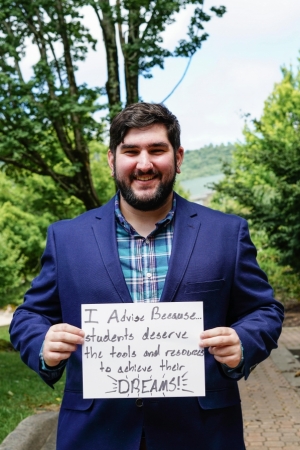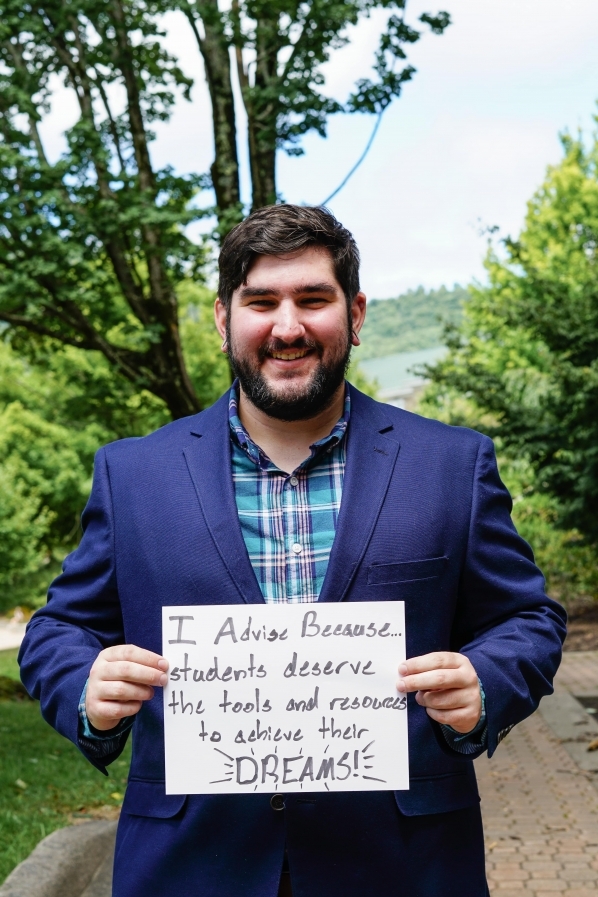October is here, and FAFSA season has officially begun! As an adviser, this is quite the busy month, seeing as October is College Awareness Month. At Burns High School, we have planned various visits and information sessions from colleges and universities for the month of October. In addition to this, we are making a push for our students to create CFNC accounts and explore career and college opportunities, complete Residency Determination, an essential part of the college application process, and apply to the local community college so they have the opportunity to attend if they are interested. College Application Week is quickly approaching, and so far, I have had a plethora of students express interest in applying to colleges and universities during this week. This is shaping up to be a busy week when many of our students will apply to colleges and universities throughout the state. The best part is that if they apply to participating schools during this time, they will be able to apply for free!
Throughout October, we will be working with our students to complete college applications, submit FAFSA and file for financial aid, as well as explore career opportunities from job training to job searching. When meeting with my students, there is one question that I always ask: Are you planning on applying for financial aid? Chances are if they are pursuing any sort of educational opportunity past high school, it comes at a price. While these programs may not offer federal student aid, they are surely to offer some form of financial assistance to students. Most of the time this feels like the first time that my students have ever been presented with this information and asked to make this decision. I always offer them a brief overview of the financial aid process and how financial aid is awarded, making sure to respond to any questions or concerns along the way. These are some of the most common FAFSA myths and misconceptions that I have heard so far…
“The FAFSA is too hard and takes too long to complete.”
Whenever I mention the FAFSA or financial aid, I see looks of dread and terror come across my students' faces. There is something about these words which carries a negative connotation and seems to imply that a difficult and lengthy process lies ahead. In reality, it only takes approximately 10 minutes to create a FSA ID, which are students’ and parents’ personal accounts with the U.S. Department of Education. The FAFSA itself only takes approximately an hour to complete. The most infamous sections of the FAFSA are the student and parent financials which require entering financial and tax information. Fortunately, these sections have become far less tedious thanks to the IRS Data Retrieval Tool. This allows for eligible students and parents to automatically transfer their necessary tax information into the FAFSA. Not only does this save time but, it is also the most accurate way to enter tax information into the FAFSA.
“I can’t file the FAFSA because I haven’t applied to any schools.” or “I shouldn’t fill out the FAFSA until I’m accepted into college.”
Students should complete the FAFSA as soon as they possibly can (once it opens on October 1 of each year) in order to have access to the most available financial aid. When filling out the FAFSA, students will be asked to list the schools from which they wish to receive financial aid offers. After they receive their admissions decision, they will receive a financial aid award letter from the school. I always encourage my students to finish the FAFSA as soon as possible. Afterwards, we transition to applying for as many scholarships as possible. The goal is for our students to attend the schools and programs they want to without accumulating an insurmountable amount of debt.
“I don’t want to pay to submit my FAFSA application.”
FAFSA stands for the Free Application for Federal Student Aid. You do not have to pay in order to apply for financial aid. If an application for federal student aid asks for a payment, it is not a legitimate application. While I personally have not come across this, it is something that is talked about quite often in the world of college advising and something to be on the lookout for. I make sure to emphasize to my students that the FAFSA is always free to complete.
“I submitted my FAFSA and completed the financial aid process.”
While submitting the FAFSA is a huge accomplishment, there are still a few things to be on the lookout for. Students will receive a financial aid award letter for the schools they apply to and list on their FAFSA. This will give an overview of the financial aid they are eligible to receive. The financial aid award package is just an offer, and students may choose which loans and scholarships they are going to accept. I tell my students that they can accept all of the money, none of the money, or some of the money. I also encourage my students to accept free money first (grants and scholarships), earned money second (work-study), and borrowed money last (student loans). It is important that all students keep an eye on the status of their FAFSA in case they are flagged for verification and need to submit additional documentation. Students will also receive a Student Aid Report which summarizes the information they submitted and provides an estimate of the award they will receive.
“My parents make too much money so I won’t qualify for aid.”
Whenever I ask my students whether or not they are planning to apply for financial aid, this is hands down the most common response. Honestly, I’m not sure where this myth comes from but it seems to be quite the common misconception. Schools cannot build and award a financial package unless students have completed the FAFSA. Even if my students are unsure as to whether or not they will receive financial aid, I always encourage them to apply. Not only is the FAFSA free but there are a plethora of grant, scholarship, and loan opportunities that they may qualify for at both the federal and institutional levels.
There are certainly plenty of FAFSA myths and misconceptions going around. As an adviser, my goal is to inform my students with correct FAFSA information throughout all steps of the financial aid process. FAFSA season is here, and the time to apply for financial aid is now!
Adviser Perspective by Caleb Sarver

